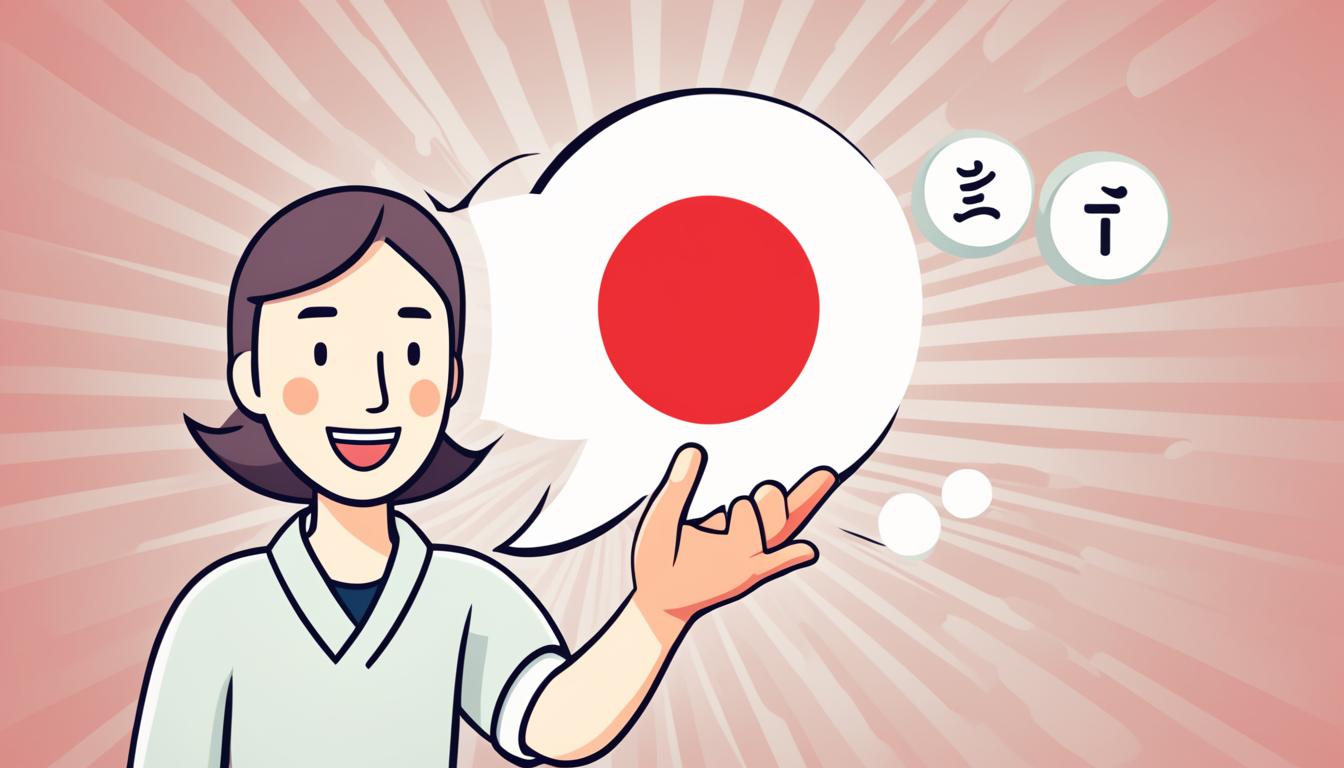Welcome to our quick guide on the Japanese word “kudasai.” In this article, we will explore the meaning, grammar, pronunciation, and cultural usage of this versatile expression.
If you’ve ever wondered what “kudasai” means in Japanese, look no further. “Kudasai” is an honorific expression used to indicate a polite request. It is often translated as “please” in English.
Grammatically, “kudasai” is used in conjunction with a verb in its て form to ask someone to do something. For example, saying “食べてください” (tabete kudasai) means “Please eat.” The word “kudasai” can also be used with nouns, quantities, and negative verb forms to make different types of requests.
When it comes to pronunciation, “kudasai” is pronounced as “koo-dah-sigh.” The emphasis is on the second syllable, “dah.” To help you remember the pronunciation, think of it as saying “coo” followed by “dash” but with an elongated “ah” sound at the end.
Equivalent words for “kudasai” in English include “please,” “kindly,” and “if you could.” These words convey a similar sense of politeness and respect when making requests.
In written form, “kudasai” can be represented in kanji as 下さい, which literally means “give me” or “please give.” The kana version, ください, is also commonly used in both writing and everyday conversation.
Understanding how to use “kudasai” in different contexts is important for navigating Japanese language and culture. It is commonly used in various situations, such as when shopping or ordering food, as well as in formal settings when showing respect to someone of higher social status.
Now that you have a basic understanding of “kudasai,” let’s delve deeper into its usage and explore some common patterns in the next sections of this guide.
The Basics
Kudasai is a versatile expression that is commonly used in Japanese to make requests in everyday conversation. Whether you’re shopping, ordering food, or asking for a favor, understanding how to use kudasai is essential.
The basic pattern of using kudasai is to follow a noun or verb in its て form with ください. For example, if you want to buy a skirt, you can say “このスカートをください” (Please give me this skirt). The particle を is often omitted in spoken language.
Kudasai can also be used with quantities. If you want to ask for three items, you can say “三つください” (Please give me three). This eliminates the need for the particle を because the quantity serves as the object of the request.
In addition, kudasai can be used with a negative verb form to request that someone not do something. For instance, if you want to ask someone not to imitate, you can say “マネしないでください” (Please don’t imitate).
Remember, kudasai is an important phrase to use in everyday conversation in Japan. It allows you to make polite requests and show respect to others.
Patterns of Use

Kudasai, a versatile expression in Japanese, can be used in different patterns to make specific types of requests. Understanding these patterns will help you effectively communicate your needs in various situations.
Kudasai with Nouns
One common pattern is using kudasai with a noun and the particle を, as in “りんごをください” (Please give me an apple). This structure allows you to request a specific object or item you desire. In conversation, the を particle can often be omitted, making the request more concise.
Kudasai with Quantities
Another pattern involves using kudasai with quantities. For example, you can say “三つください” (Please give me three). In this case, the quantity serves as the object of the request, so the を particle is not needed. This pattern is especially useful when you want multiple items or a particular number of something.
Kudasai with Verb Te-Form
Kudasai can also be used with a verb in its て form to make a request for someone to do something. For instance, you can say “食べてください” (Please eat). This pattern is commonly used when asking someone to perform an action or engage in a specific behavior. The て form of the verb allows for connecting the request with kudasai.
Kudasai with Negative Verb Form
Lastly, kudasai can be used with a negative verb form and the particle で to request that someone not do something. An example would be “マネしないでください” (Please don’t imitate). This pattern is used to politely ask someone to refrain from a particular action or behavior.
By understanding and utilizing these patterns of use, you can confidently make various types of requests in Japanese, effectively communicating your needs and preferences.
Beyond the Basics
In addition to the basic usage of kudasai, there are some advanced expressions and variations to be aware of. These variations allow for a more nuanced and tailored approach when making requests in Japanese. Let’s explore some of these advanced usage scenarios:
Formal Kudasai Expressions
One way to elevate the level of politeness and formality when using kudasai is by incorporating honorific expressions such as ご or お. These honorific prefixes can be added before ください to create a more formal request. For example:
お閉めください (Please close [the windows])
Expressions like these are often used in formal settings or when showing respect to someone of higher social status.
Polite Request Form
Another advanced variation is using the expression 〜てくださいませんか, which adds an extra level of politeness by transforming the request into a question. This form is commonly used in formal or professional settings to convey a sense of politeness and deference. For example:
このデータを見てくださいませんか (Could you please look at this data?)
By using this form, you can demonstrate your respect and politeness when making a request in a formal context.
Casual Kudasai Expressions
On the other end of the spectrum, there are also casual expressions of kudasai that are used in informal settings and with close friends or family members. These expressions typically involve using the casual form of the verb and adding ください. For example:
飲んでください (Please drink [this])
By using these casual expressions, you can create a more relaxed and friendly tone in your requests.
Now that you have a better understanding of the advanced usage and variations of kudasai, you can further customize your requests in Japanese to match the appropriate level of formality and politeness in different social contexts.
Tips for Using Kudasai Effectively
When using kudasai, it is important to consider the appropriate level of politeness and formality for the situation. In general, ください is a polite expression that can be used in various contexts. However, there are different levels of politeness and formality that can be achieved by using variations of kudasai, such as ご/お〜ください or 〜てくださいませんか.
It is important to match the level of politeness with the social context and the relationship between the speakers. Using the proper level of politeness demonstrates respect and understanding of Japanese cultural norms. When interacting with someone of higher social status or in a formal setting, using ご/お〜ください can show proper etiquette and politeness.
It is worth noting that using kudasai can sometimes come across as too direct or awkward when asking for a favor. In these cases, it may be more appropriate to use a more humble expression, such as 〜てもらえませんか, to show respect and gratitude for the favor being asked. This conveys a sense of humility and appreciation.
Overall, being mindful of cultural norms and social dynamics will help ensure that kudasai is used effectively and appropriately in Japanese communication. By using the appropriate level of politeness, you can create a positive and respectful interaction and demonstrate your understanding of Japanese etiquette.

